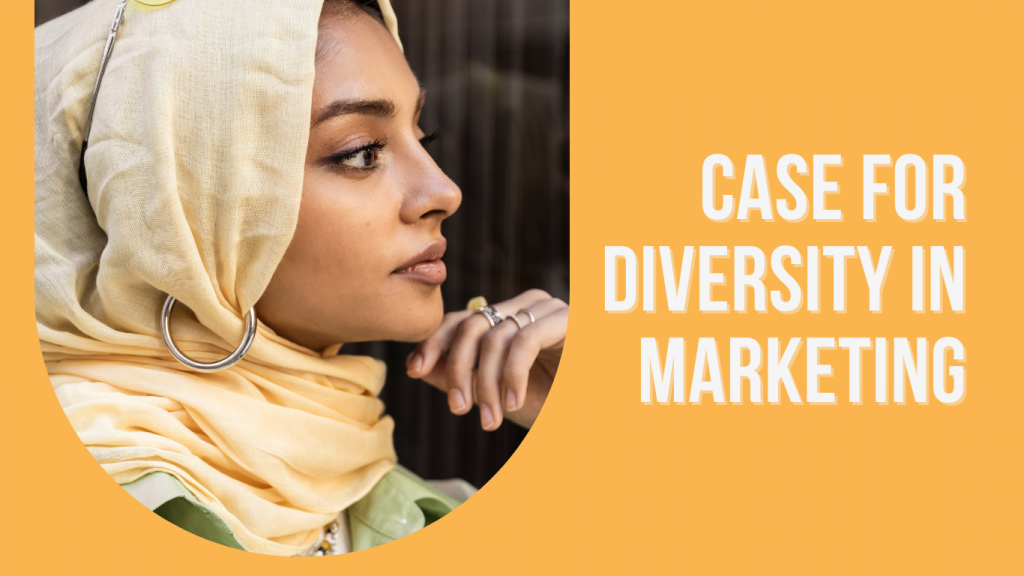Diversity in marketing is important, but many brands struggle to get it right. Why?
Brands often rely on imagery to satisfy the need for diversity in campaigns. But the more you focus on making your organization more diverse, instead of making campaigns look diverse, the more authentic and impactful your content and campaigns will be.
It comes down to one simple fact: Diversity of people and diversity of thought lead to better marketing.
As marketers, we know that effective marketing starts with understanding your audience. The more people on your team who have a deep knowledge of the audience you want to reach, the easier it is to develop material that connects to that audience.
One of the biggest challenges brands have when it comes to producing effective inclusive marketing — particularly for diverse audiences, is the lack of cultural intelligence they have for the audience they are serving.
Sonia Thompson, CEO of Thompson Media Group
Having diverse ideas, experiences, and points of view at the table will help avoid the stereotypes, superficiality, tone-deafness, and cultural insensitivity that we find in many campaigns today.
So, what can you do to advance diversity within your marketing team?
Here are seven ideas to help get you started.
1. Audit your content and campaigns
Take note of how much diversity exists within your marketing today. Does it reflect the audience you’re trying to reach?
Ask yourself, “How can I make sure our content and campaigns are more representative of the world we live in?”
2. Examine diversity within your team
Marketing teams thrive when diverse experiences, ideas, and points of view are present. The more effectively you leverage those diverse perspectives, the more likely your marketing will connect to people of diverse backgrounds.
3. Recruit and retain diverse talent
Whether looking for designers, media planners, creative strategists, developers, or data analysts, make sure you build a culture that will attract people of diverse backgrounds. Nurture their talent and amplify their voices.
Your organization will benefit from diverse teams, which are known to make better decisions and produce more revenue. So, expand your outreach to different platforms or avenues of recruitment because highly skilled people come from all walks of life.
4. Establish a set of diversity principles
Help stop the spread of stereotypes and curb the creation of offensive or culturally insensitive creative work by establishing guidelines or principles that all staff can refer to during the creative process. Consider establishing a panel to review material before it gets published.
Having visual cues around the office can help reinforce these diversity principles within your team. I like this example from Google, which shows that simple changes to video scripts can help break down stereotypes.

5. Partner with agencies who care about diversity
If you rely on agency partners to produce creative work, make sure their values align with your own. Don’t be afraid to sit down with your agency partners to talk about diversity. Learn from each other by sharing your plans.
6. Create a hate-free online community
Freedom of expression is essential, but it’s not a free pass for hateful commentary that incites violence, racism, or discrimination of any kind. As the gatekeeper of your digital channels, make it explicitly clear in your community guidelines that this behaviour will not be tolerated. And then enforce the rules if they get broken.
7. Ensure everyone feels responsible
Diversity and inclusion is a journey, not a one-off initiative. For real change to happen, every team member must buy in.
People who are underrepresented should not be held solely accountable for advancing diversity within your marketing team — it’s a responsibility shared by everyone.
Diversity in marketing allows people regardless of age, race, ethnicity, religion, abilities, sexual orientation, gender identity, or gender expression to see themselves in what you create. When you focus on inclusive representation — whether it’s in campaign creative or the work rooms where creative is built — it leads to stronger marketing.
If you care about diversity and inclusion, start making it a priority today.
Not sure where to start? Download this free resource.
